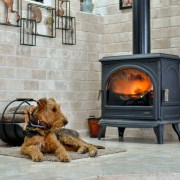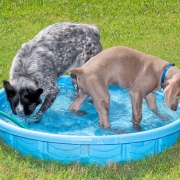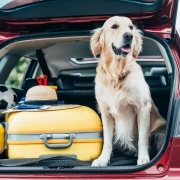Colder weather is starting to blanket northern Colorado. Snow, sleet, ice, and wind…there’s a lot to prepare for when it comes to winter weather. Just like we’re affected by the cold, our pets are, too. Here are a few simple measures you can take to make sure they stay happy and healthy throughout the winter.
1.) Know Your Pet’s Limits
Some pets are more susceptible to the cold than others. Short-coated, thin, elderly, or very young pets get cold more quickly so you need to make sure that you adjust the time that they spend outside. Hypothermia and frostbite can cause major risks to them in the winter, and if you notice the following signs, keep them warm and get to an emergency vet for treatment:
- Strong shivering and trembling followed by no shivering
- Acting sleepy or lethargic and weak
- Fur and skin are cold to the touch
- Body temperature is below 95 degrees (Fahrenheit)
- Decreased heart rate
- Dilated pupils (the black inner circle of the eye appears larger)
- Gums and inner eyelids are pale or blue
- Trouble walking
- Trouble breathing
- Stupor, unconsciousness, or coma
If you suspect your pet has hypothermia, take the following steps:
- Remove your pet from the cold and put them in a warm room.
- Dry off your pet thoroughly either with towels or a hairdryer set on low and held about twelve inches away.
- Wrap your pet in a blanket. Warm it in the clothes dryer first.
- Wrap warm hot-water bottles in towels (to prevent burning your pet) and place them on the pet’s abdomen.
- Heating pads can be used if your dog is dry, but supervise them so they don’t chew at the cords.
- Allow your dog to drink warm fluids.
- Check the pet’s temperature with a thermometer.
If your pet’s temperature is below 95 degrees, they could be at risk for hypothermia. Take them to a vet immediately.
2.) Keep them leashed
More pets become lost in the winter than any other season because snowfall can disguise recognizable scents that would normally help them find their way home. Prevent them from becoming lost by being leashed on walks and, just in case you are separated from your pets, make sure their collars have up-to-date contact information and they are microchipped.
3.) Wipe Their Paws
During winter walks, your pet’s paws can pick up all kinds of toxic chemicals – salt, antifreeze, or de-icers. Be sure to wipe off their feet when you return from walks to prevent them from licking it off and becoming sick. Also keep in mind that as you are cleaning them off to check for signs of injury, such as cracked or bleeding paws.
4.) Keep Yourself and Your Pet Safe At Night
Due to Daylight Savings Time, many of us are relegated to walking our pets in the dark. Keep yourself and your pet safe by wearing reflective gear and keeping them close while walking on the street.
“It takes time for our animals to adjust to the cold temperatures,” says Larimer Humane Society Supervising Veterinarian Dr. Lindsey Gapstur. “Juvenile and elderly animals are most susceptible to weather change, and owner may notice decreased energy levels, limping, heat seeking behavior, and change in appetite. Make sure to provide warmth and opportunities to adjust before jumping right into cold weather exposure for your pets!”
It’s not all risk and danger. Winter offers opportunities to play in the snow, explore beautiful frosty scenery, and keep warm by the fireplace. Keeping your pet safe in cold weather is essential, but it won’t be difficult if you’re prepared. Remaining diligent is the best thing you can do as a pet parent; plan for the cold months ahead of time, know-how cold is too cold for your pet, and be ready to manage a variety of scenarios.










